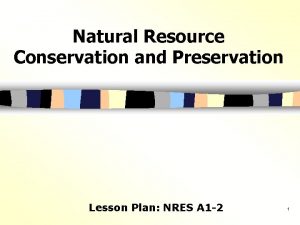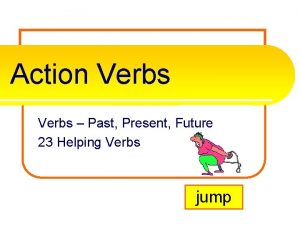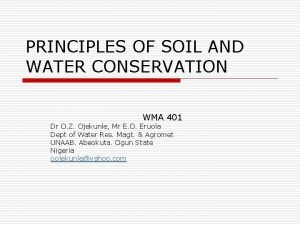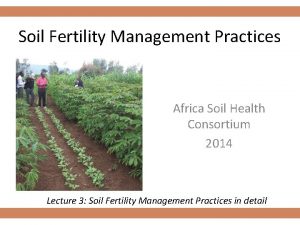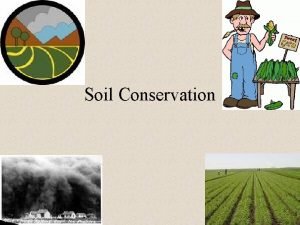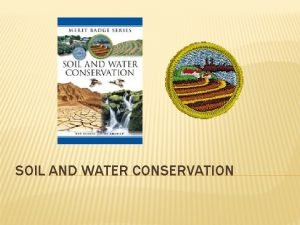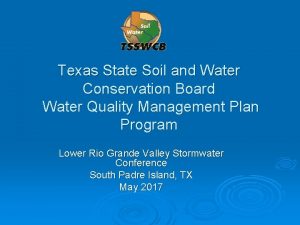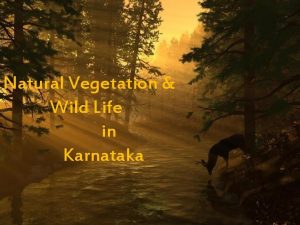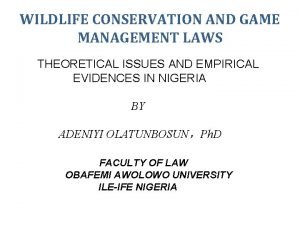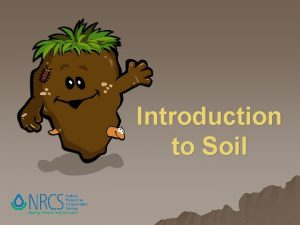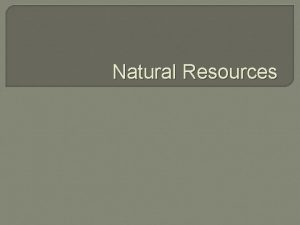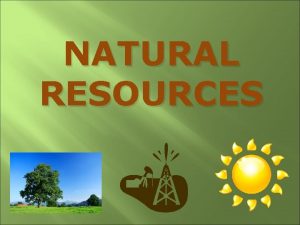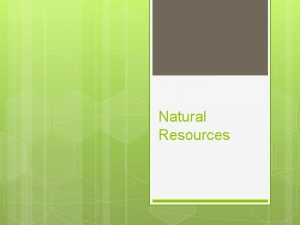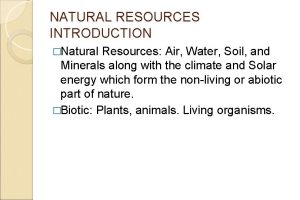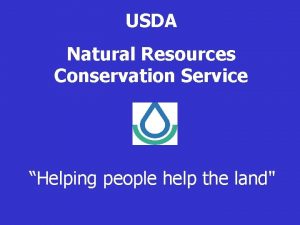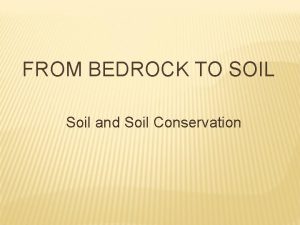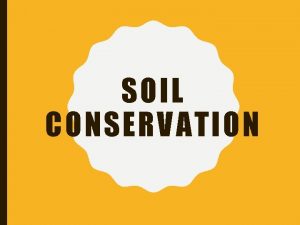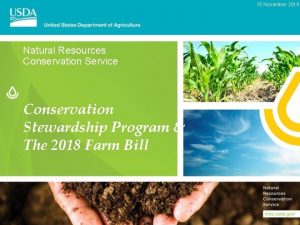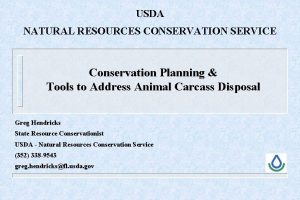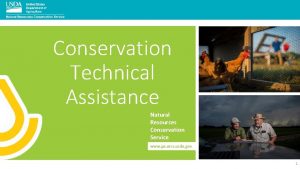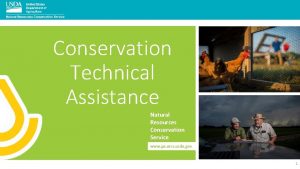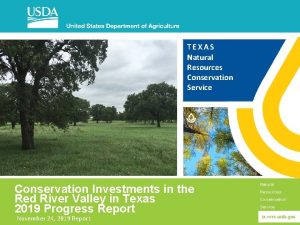Introduction to Soil Natural Resources Conservation Service Helping


















- Slides: 18

Introduction to Soil Natural Resources Conservation Service Helping People Help the Land

Do Now Write down what you think the difference is between soil and dirt 2. List as many reasons you can think of why soil is important 1.

Careers in Soil Science Soil and Plant Scientists from Careers. org

SOIL u Geologic definition: Loose surface of the earth as distinguished from solid bedrock; support of plant life not required.

SOIL u Traditional definition: Material which nourishes and supports growing plants; foundation of every living thing

Dirt u Soil out of place and unable to serve it’s purpose

Importance of Soil u Foundation for roads and structures u Home to plants and animals u Grow things in it u Contains and filters water u Helps dispose of waste u Basis for recreation areas

Soils Perform Several Vital Functions Sustaining plant and animal life below and above the surface Regulating and partitioning water and solute flow Filtering, buffering, degrading, immobilizing, and detoxifying Storing and cycling nutrients Providing support to structures

Soil Studies Can Be Incorporated Into Other Studies Science ecology, biology, chemistry Social Studies world trade, land use Mathematics soil loss over one hectare History settlement of the U. S. , dust bowl Art soil crayons, acrylic paints

SOIL u Mixture of mineral matter, organic matter, water, and air. u Properties of soil

SOIL COMPONENTS Air 25% Mineral Matter 45% Water 25% Organic Matter 5%

3 Fractions of Mineral Matter u Sand u Silt u Clay

Soils Are Alive Organism Types bacteria fungi protozoa nematodes arthropods earthworms Roles & Benefits decomposition release nutrients create pores stabilize soils


• • Scientific Names for Soils Should Be Used Like plants and animals, soils are classified The system is called Soil Taxonomy The highest level is the soil order (12) The lowest level is the soil series, often a place name

USDA Textural Triangle

Soil Color u Indicator of different soil types u Indicator of certain physical and chemical characteristics u Due to humus content and chemical nature of the iron compounds present in the soil

Want to learn more about soil? u Visit NRCS’ website at the National Soil Survey Center at We www. soils. usda. gov Natural Resources Conservation Service Helping People Help the Land Prepared by Earl D. Lockridge National Soil Survey Center Lincoln, NE USDA NRCS ~ An equal opportunity provider and employer KNOW Soil!
 Lesson plan on conservation of natural resources
Lesson plan on conservation of natural resources What are the 23 action verbs?
What are the 23 action verbs? Soil conservation and domestic allotment act
Soil conservation and domestic allotment act Soil conservation and domestic allotment act
Soil conservation and domestic allotment act The new deal fights the depression
The new deal fights the depression Objectives of water conservation
Objectives of water conservation Hudson essex passaic soil conservation district
Hudson essex passaic soil conservation district Africa soil health consortium
Africa soil health consortium Soil conservation
Soil conservation Explain water pollution
Explain water pollution Texas state soil and water conservation board
Texas state soil and water conservation board Living soil vs dead soil
Living soil vs dead soil Four major spheres of the earth
Four major spheres of the earth Types of vegetation of karnataka
Types of vegetation of karnataka Transformed and transforming resources
Transformed and transforming resources Fixed resources
Fixed resources Renewable vs nonrenewable resources worksheet
Renewable vs nonrenewable resources worksheet Biodiversity introduction
Biodiversity introduction Introduction of wildlife conservation
Introduction of wildlife conservation
